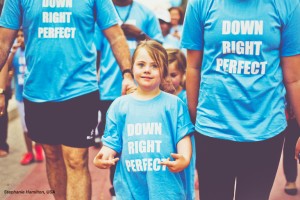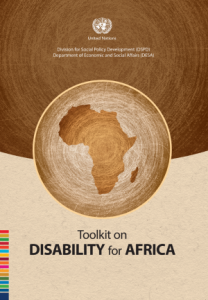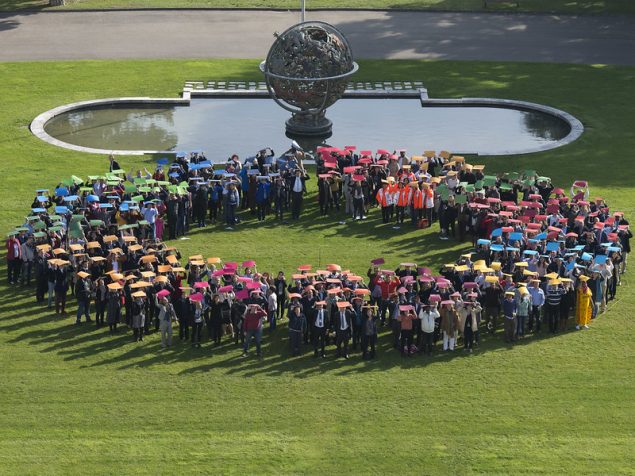
Promoting an accurate image and enhancing the voice of persons with disabilities in the media
Background
Currently, there are approximately 1 billion persons with disabilities in the world, or 15 per cent of the global population. In both developed and developing countries, evidence suggests that persons with disabilities are disproportionately represented among the world’s poor and tend to be poorer than their counterparts without disabilities. Economic and social exclusion is a part of the daily lives of persons with disabilities and is a breach of human rights and a major development challenge. The rich diversity of our society inclusive of all its members – including persons with disabilities – can help strengthen fundamental human rights and contribute to development for all.
The United Nations is committed to the full and equal enjoyment of all human rights by all persons, including persons with disabilities. It has a long history of promoting these rights in all areas, and on an equal basis with others, in order to achieve a society for all. The work of the United Nations for persons with disabilities is now supported by a legally binding document – the Convention on the Rights of Persons with Disabilities – that prepares the way to further empower persons with disabilities to better their lives and promote their inclusion in society on an equal basis with others.
The role of the media
Images and stories in the media can deeply influence public opinion and establish societal norms. Persons with disabilities are seldom covered in the media, and when they are featured, they are often negatively stereotyped and not appropriately represented. It is not uncommon to see persons with disabilities treated as objects of pity, charity or medical treatment that have to overcome a tragic and disabling condition or conversely, presented as superheroes who have accomplished great feats, so as to inspire the non-disabled.
The media can be a vital instrument in raising awareness, countering stigma and misinformation. It can be a powerful force to change societal misconceptions and present persons with disabilities as individuals that are a part of human diversity. By increasing the awareness and understanding of disability issues and the diversity of persons with disabilities and their situations, the media can actively contribute to an effective and successful integration of persons with disabilities in all aspects of societal life. Indeed, the Convention on the Rights of Persons with Disabilities requires States to raise awareness and combat stereotypes related to persons with disabilities, including by encouraging all media to portray persons with disabilities in a manner consistent with a respect for human rights.
Changing perceptions
Attention should be drawn to the image of disability in the media with a view to an accurate and balanced portrayal of disability as a part of everyday life. The media can play an important role in presenting disability issues in a way that could dispel negative stereotypes and promote the rights and dignity of persons with disabilities. Furthermore, options should be developed on how to present persons with disabilities in various media and the importance of supporting the work of the United Nations to build a peaceful and inclusive society for all.
The Convention on the Rights of Persons with Disabilities can work as a tool to enhance the work of the media in promoting the rights of persons with disabilities, as well as to promoting their access to education, employment, health and other areas of development on an equal basis with others.
Opportunities
Public events and other international commemorations can provide excellent opportunities to raise-awareness and conduct outreach to promote the disability perspective and highlight the concerns of persons with disabilities. Disability-awareness and related sensitivity trainings can also be conducted in organizations in conjunction with such events or be mainstreamed in standard operating procedures. Some UN-sponsored opportunities and campaigns include:
– World Down Syndrome Day, 21 March
– World Autism Awareness Day, 2 April
– World Mental Health Day (10 October)
– World Sight Day (second Thursday in October)
– World AIDS Day, 1 December
– International Day of Persons with Disabilities, 3 December
– Human Rights Day, 10 December
– Inclusion saves lives: DiDRR campaign
– UN Enable Film Festival
Spokespersons
Public figures, senior Government officials and high-profile celebrities can work to change societal perceptions about disability and raise awareness about the concerns of persons with disabilities. Some UN-related spokespersons include:
– UN Messengers of Peace
– Special Rapporteur on the Rights of Persons with Disabilities
– Special Envoy of the Secretary-General on Accessibility and Disability
– Goodwill Ambassadors: UN Players, UNHCR, UNICEF, UN Women
Partnerships
It is vital to include persons with disabilities and their organizations in preparing for any media and communications strategy or event. A common slogan that echoed through the halls of UN Headquarters during the drafting of the Convention was “Nothing about us, without us”. Multi-stakeholder partnerships that include Governments, UN system organizations, civil society organizations, as well as organisations of persons with disabilities is the way forward to advance the rights and inclusion of persons with disabilities in society and development.
Other resources
- Eliminating Offensive Terms about People With Disabilities (Style guide and Terms To Avoid When Writing About Disability)
- Media Representation of Disabled People
- Disability Rights Education & Defense Fund: Doing Disability Justice
- Changing Attitudes Changing the World: Media’s Portrayal of People with Intellectual Disabilities




